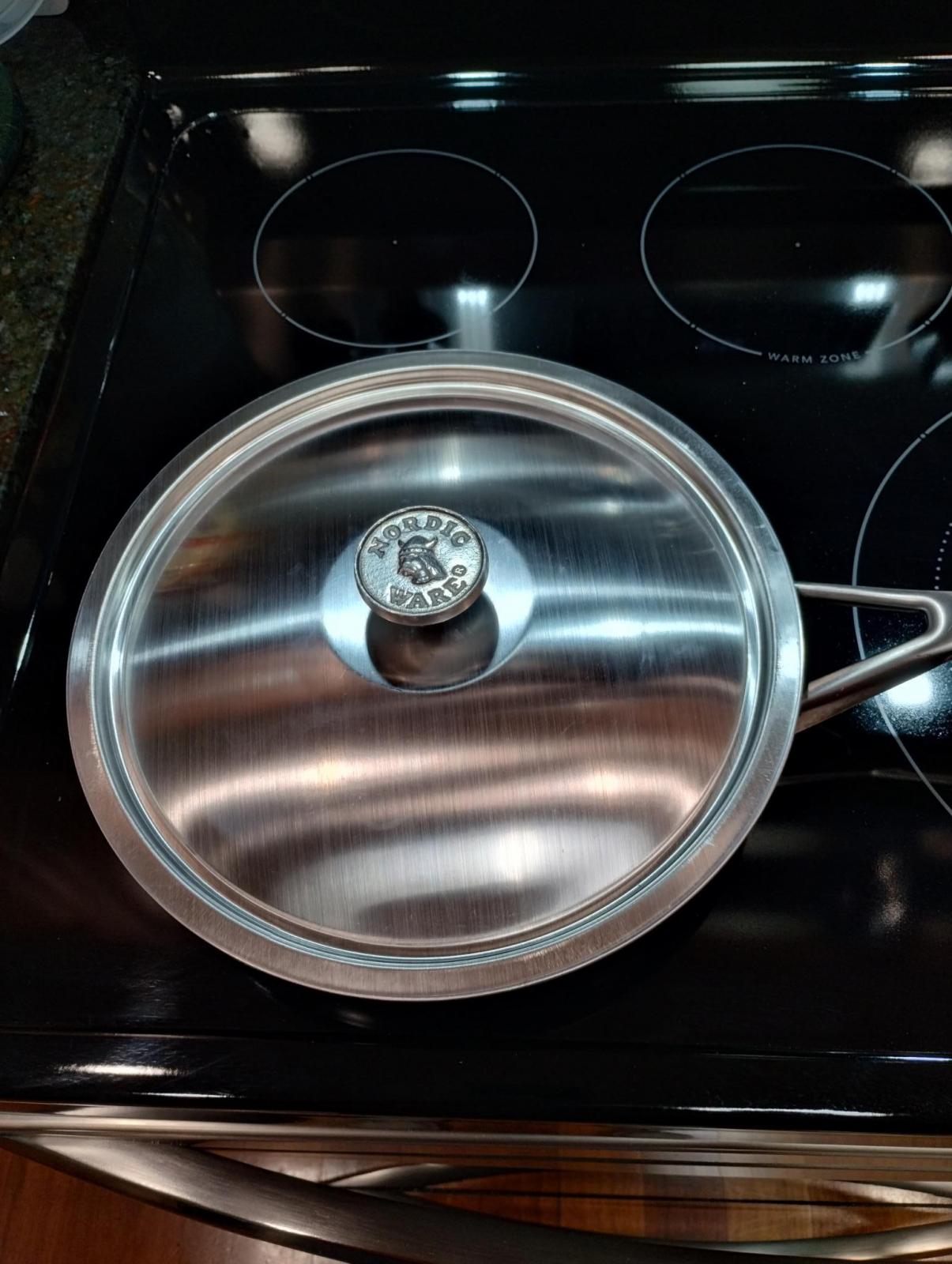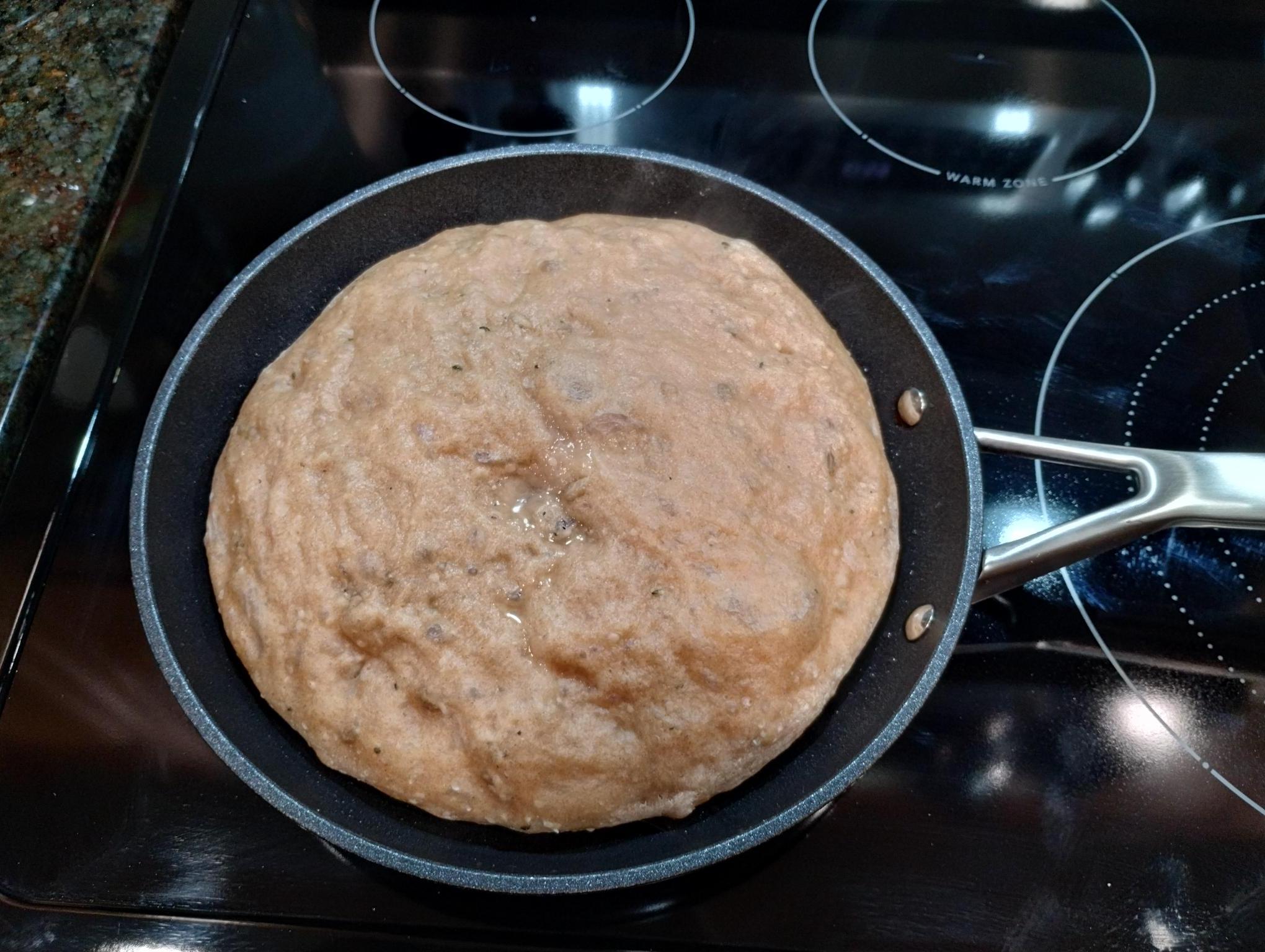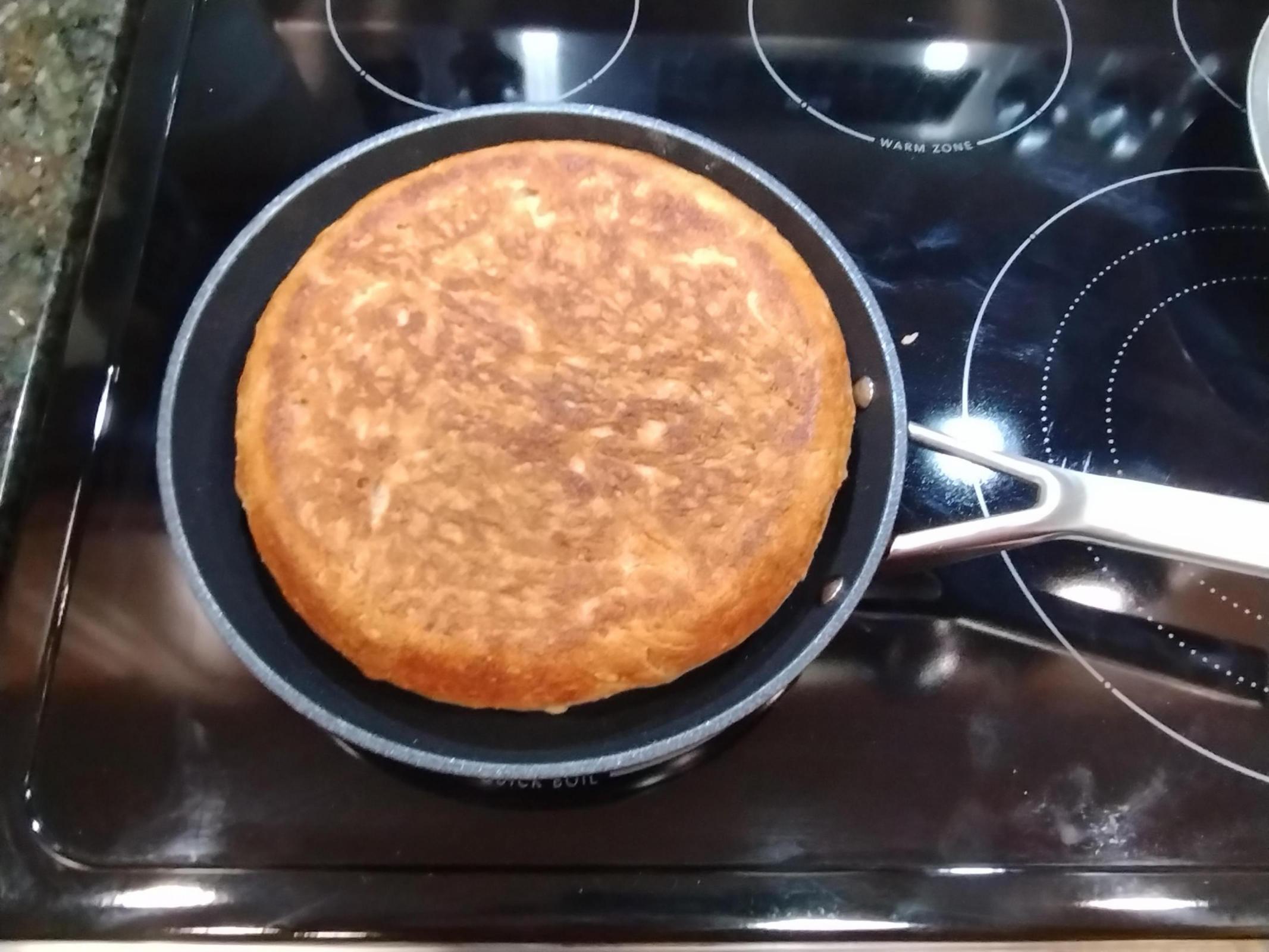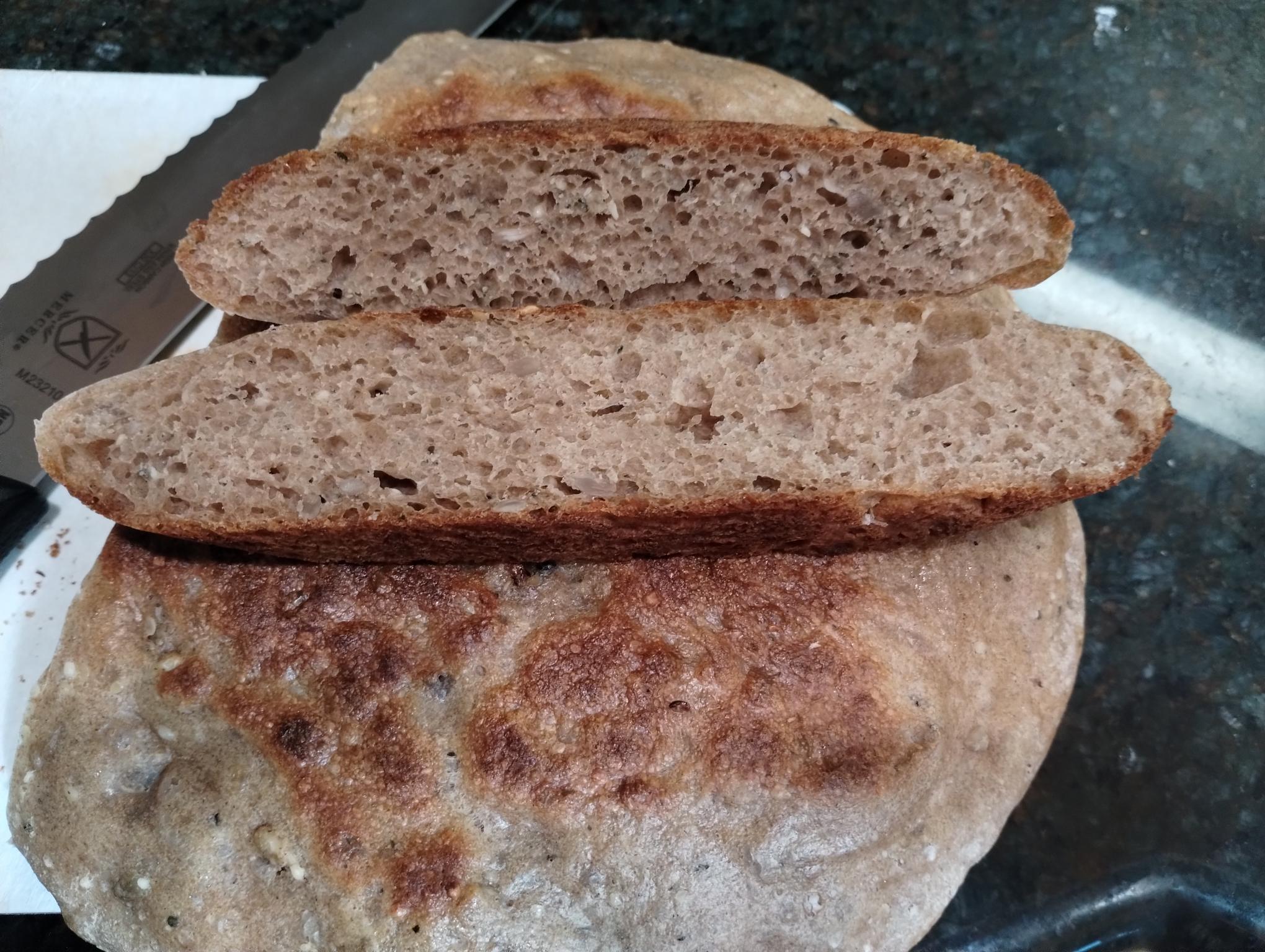This video popped up on my computer several weeks ago and it looked intriguing to play with. It definitely isn't going to win any awards for appearance or presentation.
I tweaked the flour a bit (she uses 100% AP) and added a few seeds. I didn't take time to weigh some of the ingredients, this loaf was "flying by the seat of my pants" in some respects, lol.
Flour 280 gm (48 gm AP, 48 gm KA bread flour, 185 gm sprouted spelt)
Instant Yeast - 1 tsp
Salt - 1 tsp
Sugar 1 – tsp
Hulled hemp seeds - 1 rounded Tbsp
Sunflower seeds - ~ 2 Tbsp
Lukewarm water 250 gm
Olive oil (or any really) for the pan. (Video says 1 Tbsp but that was a bit much for my pan.)
Side note... my frying pan is a Ninja Foodi Neverstick 10.25 in frying pan. Finding a lid that would fit was a bit of a challenge, but thankfully Amazon came through. The lid needs to be domed just a little, and the multi-pan lid we have dips down into the pan enough for the bread to stick to the lid when cooking.
Process:
1) Mix the dry ingredients and inclusions.
2) Add water and mix until no dry flour remains. (After the initial hand mix, I let things rest for about 15 minutes then gave it a few S&F for good measure. Probably not needed, but I do take pleasure in handling the dough just a bit....)
3) Cover and let the dough rise for about an hour.
4) Grease the (room temp) frying pan with olive oil.
5) Degas dough by rolling the dough with a spatula.
6) Sprinkle with flour and roll a few more times.
7) Put the dough in the (room temp) frying pan.
8) Cover and let the dough rise for 30 minutes.
9) Cover and cook over low heat (20-25 min). A little bit of moisture condensed and dripped onto the top of the bread, but it didn't seem to do any harm.
10) Turn over and cook for another 15 minutes without the lid. I checked at the 10 minute mark and there were areas that were still a little "doughy". Your time may vary...
This was mostly cooled and ready to eat about 45 min after cooking.
I've made it several times now. It was quick and easy, with very little handling. Bonus, it didn't heat up the kitchen. It might be fun for making with kids, camping (RV or other), or a variety of other uses. My 95 y.o. mother-in-law (who made her first loaf of bread ever about 2 years ago) thought she would like to make this. It definitely came in handy after being gone for a couple weeks. After only a couple of hours after getting home, we had fresh bread ready to eat... another plus while my starter was getting back up to speed. I suspect it will come in handy again at some point.



